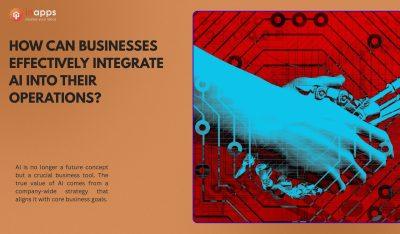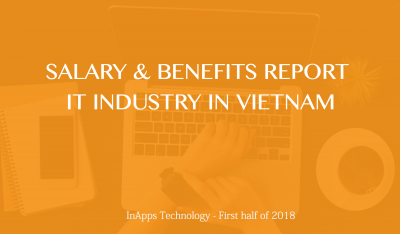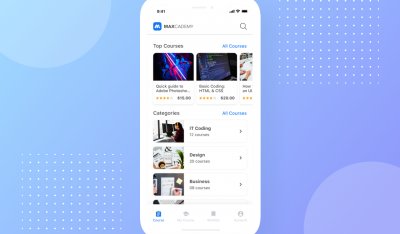- Home
- >
- Offshore News
- >
- Standard Outsourcing Business Models 2022
Outsourcing has been growing and has become a standard business practice in recent years as companies look to reduce costs and improve efficiency. There are a variety of outsourcing models that businesses can use, each with its own benefits and drawbacks. In this blog post, we’ll take a look at eight standard outsourcing business models. Moreover, we will also go through the pros and cons of each model, so you can decide which is right for your business.
To better understand, the outsourcing business models can be broken down into some specific categories. Let’s have a look at the standard models available in the outsourcing industry:
Location-based Outsourcing Business Models
Offshoring Model
This is when a company outsources its operations or works to an external service provider in a remote location. It is used to save costs and meet specific requirements. However, this outsourcing model does not favor communication and geographical boundaries, giving rise to some disadvantages such as language barriers, cultural differences, and time zones.
Onshore Model
This is when a company outsources its operations or works to an external service provider but in the same country. This model is useful when specific requirements can only be satisfied by the home team. Outsourcing is still done but onshore instead of offshore.
Nearshore Model
As opposed to outsourcing, nearshoring means outsourcing to a service provider in a nearby country or region. This model is beneficial because it reduces the time and costs associated with communication and travel. It also reduces cultural differences, which can affect business dealings.
Relationship-based Outsourcing Business Models
Dedicated Team Model
This is one of the outsourcing business models in the most common use. A dedicated team model is a form of business process outsourcing that involves hiring third-party staff to work exclusively on your operation, projects, or production processes – such as design and development, customer support, software testing, R&D, etc. The staff typically works for one client and has an exclusive contractual relationship with them. It’s important for companies to note that the dedicated team assigned may vary based on the requirement, such as project-based or full-time employees.
The benefits of this outsourcing model are that companies can save business expenses by hiring highly skilled professionals on a temporary basis. The dedicated team approach is also flexible, which makes it adaptable to changes in business requirements. Moreover, in the dedicated team model, you have full control over the team assigned to your company.
As with any outsourcing model, however, the company “giving up” control over its work environment has to be cautious when considering this approach. Staff turnover and lack of day-to-day supervision may make it difficult to meet goals and deadlines and reduce profits due to unproductive staff. For this reason, companies must be practical about the tasks they outsource and choose a dedicated team that is the right fit for their business needs.
This model is appropriate for companies that outsource an entire business function but don’t currently have the resources in-house. It’s also a good option for businesses in transition, such as overgrowing start-ups or established local companies expanding into new markets.
Staff Augmentation
Staff augmentation, also known as team extension, is also one of the prevalent outsourcing business models in which a customer hires a provider to supplement their workforce. This can be done through a contract, usually requiring the service providers to meet specific standards and goals over time. Staff augmentation can be used for permanent or temporary needs – such as handling a busy season, getting through a shortage of software engineers, or training current employees.
Staff augmentation is a popular outsourcing model as it can be done for various business functions. This flexibility means the outsourced team could provide services such as marketing, IT, or R&D. The staff augmentation model typically offers a more affordable option for small businesses without the resources to attract and hire talented employees in-house.
The downside of this outsourcing model is that you often don’t have direct control over the people assigned to your company like the dedicated team model, resulting in a lack of commitment and motivation from your outsourced team members. Staff augmentation outsourcing is a good fit for companies with fluctuating hiring needs or who want complete flexibility around where their employees are located. In addition, customers choosing this model often have a global workforce and require help with special projects.
Project-based Model
Also known as a task-based model, the project-based model is one of the most common outsourcing business models. It entails hiring a provider to accomplish specific tasks at an hourly rate. Once the hours are up, the contract is over unless it’s renewed by mutual agreement. For example, a company might hire a provider to design their website and train their staff on how to update it regularly; once the design and training are complete, the contract ends unless both parties agree to extend it. Project-based models include software development, website design, and product engineering, or any type of work that can be broken down into discrete parts. This is a popular outsourcing model with small companies because it offers flexible hours and lower costs than other models. However, it can be risky if the provider doesn’t meet your expectations.
Knowledge-based Outsourcing Business Models
Business Process Outsourcing
BPO (Business Process Outsourcing) is a popular form of outsourcing where a company transfers tasks from internal capabilities to an external provider to improve efficiency. BPO covers a broad range of activities, including IT, customer service, and accounting. The transfer of tasks typically involves the contracting of a complete process or service, such as finance and accounting (also known as Account Payable), recording telephone calls (also known as speech-to-text), or managing human resources-related activities (for example, employee on-boarding).
The benefits of business process outsourcing often include improved quality while reducing costs due to subject-matter expertise, economies of scale, and process standardization. Companies need to consider the challenges associated with BPO, including IT security risks due to outsourcing sensitive data, potential loss or damage of intellectual property rights, language barriers, cultural differences, and time zone issues.
Knowledge Process Outsourcing
KPO or knowledge process outsourcing is when an organization acquires the services of another company with the goal of taking advantage of that firm’s expertise. This is usually done by transferring knowledge-related tasks to an external agency, which will complete them at a lower cost than in-house employees. Knowledge process outsourcing can be used for ongoing or short-term needs – such as complex projects, special studies, or one-off services.
This outsourcing model is beneficial because it allows businesses to access niche expertise challenging to find in-house. Outsourced services are also scalable, meaning that they can expand or shrink according to your requirements. The downside of KPO is that there may be issues communicating between multiple companies, leading to mistakes.
Knowledge process outsourcing is an excellent choice to improve efficiency or productivity without hiring additional staff. It’s also practical for businesses that don’t have the internal capacity to complete complex tasks.
Pricing Outsourcing Business Models
Time-and-material Model
The customer agrees to pay the outsourcers a fixed monthly fee for a predetermined number of hours and/or days per month. The agreement clearly identifies the service and its scope and duration and may set out the internal processes required by the outsourcer to deliver this. A typical example is software development work, where payment is made at an hourly rate for development costs.
Fixed-price Model
In this outsourcing model, the customer pays a fixed price for a clearly defined scope of work. The model is often utilized when the customer does not want to bear any other types of risks other than budget risk. This is different from the time-and-material model in that no specific hours or days are specified, and there is usually a tight deadline for completion, often measured in weeks and months and not hours and days.
A typical example is a project for developing a new application where the customers pay a fixed amount to the outsourcer who agrees to develop the application within 4-6 weeks. There may also be an incentive payment if it is completed ahead of schedule.
Incentive-based Model
This is a hybrid of the fixed-price and time-and-materials model. The customer pays for results instead of hours worked or materials consumed. The outsourcers typically get additional incentives if they can complete the project within budget and schedule. The agreement may contain penalty clauses if milestones are not met to minimize risks. This outsourcing model is popular with IT services companies, and it is increasingly becoming the preferred model for software projects.
On-demand Outsourcing Business Models
Software Outsourcing
Software outsourcing is a general term for the process of contracting business functions to an outside company instead of having an internal team provide services. It’s one form of outsourcing business model but is commonly used to describe IT functions, such as managing servers or storing data on the cloud.
One benefit of this outsourcing model is that it allows companies to access the talent pool they wouldn’t otherwise gain access to due to the high costs of hiring internal staff. You can also increase or decrease your usage as you see fit, allowing for a flexible workforce management process with no long-term commitment.
There are several downsides to this outsourcing model, though. For example, it can be challenging to measure a provider’s performance and ensure they’re meeting your needs. It may reduce internal innovation, as you don’t have the resources to develop new strategies or improve existing ones. This can also reduce long-term performance and make it difficult for your company to stay competitive in the long run.
Despite some drawbacks, software outsourcing is still a good option, enabling you to focus on your core activities while your provider manages and delivers IT services. It’s also practical for start-up companies with no resources to manage an in-house team.
Business Intelligence Outsourcing
Business Intelligence (BI) outsourcing is a business model in which a client outsources their data analytics, and reporting needs to a third party. This outsourcing model is commonly used by companies that want to improve the efficiency of their in-house teams without the burden of hiring full-time employees. BI outsourcing can be used for ongoing or short-term needs – such as standard reporting or ad hoc studies.
Some key benefits of business intelligence outsourcing include minimal workforce management, access to cutting-edge technologies, and transparent pricing. This outsourcing model is also commonly used to manage day-to-day business operations in which multiple departments are involved.
Like other outsourcing business models, BI outsourcing also has some disadvantages. Firstly, you don’t have full control over the process, as it’s a managed service. Secondly, it may be can be expensive since you’re paying for the expertise and resources of a third-party vendor, which can be costly, especially if you need regular access to these services. Last but not least, business intelligence outsourcing can take time to set up and may require a lot of customization to fit your specific needs. This can be time-consuming for both you and your outsourced team.
Companies should consider business intelligence outsourcing to improve the efficiency of their in-house data analytics and reporting functions but don’t have the time (or budget) to train new employees. It’s also useful if you need high-level data analytics regularly but doesn’t want the long-term commitment of hiring additional staff.
Managed Services
Managed services are another outsourcing model in which a customer buys a service, and the provider manages it for them, with limited or no input from the client. This is often done through a contract, in which the outsourcing partner agrees to maintain certain standards and meet specific goals. Managed services can be used for a variety of purposes, such as IT support, HR services, or marketing.
Businesses can save money by using this outsourcing model, as they only pay for the services they use. Managed services are also easy to scale up or down, making it a good option if your business often experiences growth or decline in its workforce.
The downside of managed services is that the company does not fully control the process. If the provider does not meet their obligations, your business can have consequences – including reduced profits, slower performance, and unreliable services.
Nonetheless, managed services are a good choice if you outsource specific tasks and have minimal interaction with your outsourcing partner. It’s also a practical option for start-ups that don’t have the resources to manage an in-house software development team.
9 Factors to Consider When Choosing an Outsourcing Vendor
Outsourcing agencies and businesses can offer various services in areas such as marketing, web design, business analytics, and more. These software development outsourcing companies essentially carry out crucial tasks for their clients, whether maintaining important data or carrying out complex research projects. When selecting the right outsourcing company to partner with, here are some factors to consider:
Company Size & History
You should find an outsourcing company that has been in business for several years. It means the outsourcing partner is more likely to stick around until your project is finished and even beyond that. The company should also have a solid track record and previous success stories, showing that they can produce high-quality work.
Industry Expertise
Find out what the outsourcing company specializes in so that you can narrow down your search. Knowing the industry and experience of your potential outsourcing company is essential so that you can outline your expectations for them. You would like to work with a provider who understands what you need to do and how it fits your overall business goals. With this information, they’re more likely to complete tasks correctly and understand any requirements for the job, and doing so from the start will help them stay on schedule.
Quality of Work
Research the outsourcing company’s previous projects to see if they’re capable of completing your project with excellence. In addition, you’d better check out their portfolio and read client testimonials, as these will provide insight into the quality of their services. Finally, if you find that most agencies have worked on similar projects for other clients, you can use this to your benefit.
References
Contact the references provided by the company in question, and ask for relevant details about their experience with them. If possible, get in touch with previous clients of the outsourcing company working on a similar type of project requiring similar skills needed to complete your assignment.
Price
Before agreeing on prices, you should quantify what you’d expect from an outsourced company so that you can gauge whether the agency’s rates meet your requirements. For instance, if you’re looking for a specialist to complete a simple business analysis study, it would be beneficial to find out how much they typically charge per hour before getting into the price.
Project Timeline
Determine if you’re looking for a short- or long-term partnership, and negotiate accordingly. This will help determine how many hours and people are needed to complete your project on time and within budget.
Commitment From the Outsourcing Partner
Only work with an outsourcing agency willing to put in the time, energy, and investment to deliver quality results. If you’re not satisfied with their work or communication skills, it would be best to choose another agency with a proven track record of delivering satisfactory results.
Availability
Discuss how quickly an outsourced employee can be available for your project when looking at agencies. For instance, if you require immediate support with a time-sensitive project, your first choice should be an agency or outsourced professional immediately available for hire.
Company Location
If possible, find out where outsourced employees are located so that there is minimal delay in communication between you and the outsourced team working on your assignment. You should also consider the time zone differences between you and any outsourced workers, as this will impact project deadlines.
Working Hours
The outsourcing company should be able to set their business hours around your needs if an outsourced employee is required for tasks that are carried out within a specific timeframe. Furthermore, ensure that all team members are on the same page with regards to working hours, as this will make it easier on their end to complete your project.
Project Management
When outsourcing a team of employees or solo professionals, decide whether you’d like a hands-on approach or if you’d prefer to let the agency manage all aspects of hiring and coordinating workers for your project. This decision will impact the cost of your project and may also affect how long it takes to complete.
Conclusion

In brief, we have compiled eight popular outsourcing business models as well as their pros and cons. We expect you to have an overview of the approach you’re looking to take when it comes to outsourcing your next project and leverage the advantages of outsourcing to the fullest. Once you deeply understand all of the available options, you can select one or more partners based on what they have to offer and their rates. Now that you know more about these outsourcing models and how they can benefit your business, you can make a well-informed choice.
Source: InApps.net
Let’s create the next big thing together!
Coming together is a beginning. Keeping together is progress. Working together is success.




















